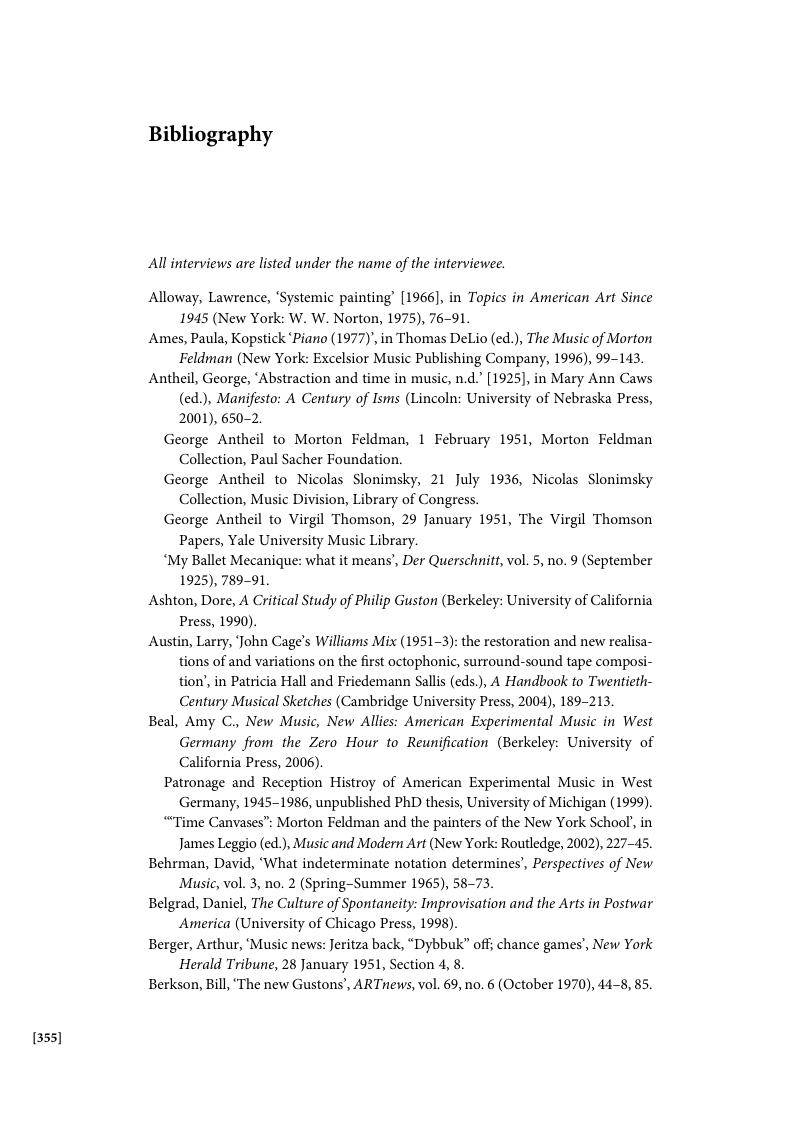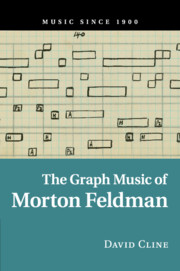Book contents
- The Graph Music of Morton Feldman
- Music Since 1900
- The Graph Music of Morton Feldman
- Copyright page
- Dedication
- Dedication
- Contents
- Figures
- Book part
- Introduction
- 1 Early graphs, 1950–1953
- 2 Later graphs, 1958–1967
- 3 Notation
- 4 Ideology
- 5 Holism
- 6 Compositional methods I
- 7 Compositional methods II
- 8 Non-notated preferences
- 9 Tudor’s performances
- 10 Connections with works in other notations
- 11 Moving on
- Epilogue
- Book part
- Bibliography
- Index
- References
- The Graph Music of Morton Feldman
- Music Since 1900
- The Graph Music of Morton Feldman
- Copyright page
- Dedication
- Dedication
- Contents
- Figures
- Book part
- Introduction
- 1 Early graphs, 1950–1953
- 2 Later graphs, 1958–1967
- 3 Notation
- 4 Ideology
- 5 Holism
- 6 Compositional methods I
- 7 Compositional methods II
- 8 Non-notated preferences
- 9 Tudor’s performances
- 10 Connections with works in other notations
- 11 Moving on
- Epilogue
- Book part
- Bibliography
- Index
- References
Summary

- Type
- Chapter
- Information
- The Graph Music of Morton Feldman , pp. 355 - 377Publisher: Cambridge University PressPrint publication year: 2016
References
Bibliography
All interviews are listed under the name of the interviewee.
[A] ‘Brushed off for years, avant garde music finally gaining recognition’, Variety, 21 February 1962, 53.
[B] ‘Composers: far-out at the Philharmonic’, Time, 14 February 1964, 80.
[C] ‘Composing by knucklebone’, Time, 13 April 1962, 55–6.
[D] ‘Is it music?’, Newsweek, 2 September 1963, 53.
[E] ‘Music here this week’, New York Herald Tribune, 9 November 1952, Section 4, 8.
[F] ‘Music in the Making’, New York Herald Tribune, 10 November 1952, 13.
[G] Selections from the Private Collection of Robert Rauschenberg (New York: Gagosian Gallery, distributed by Rizzoli International Publications, 2012).
[H] ‘Sound of cybernetics’, Newsweek, 17 February 1964, 88.



